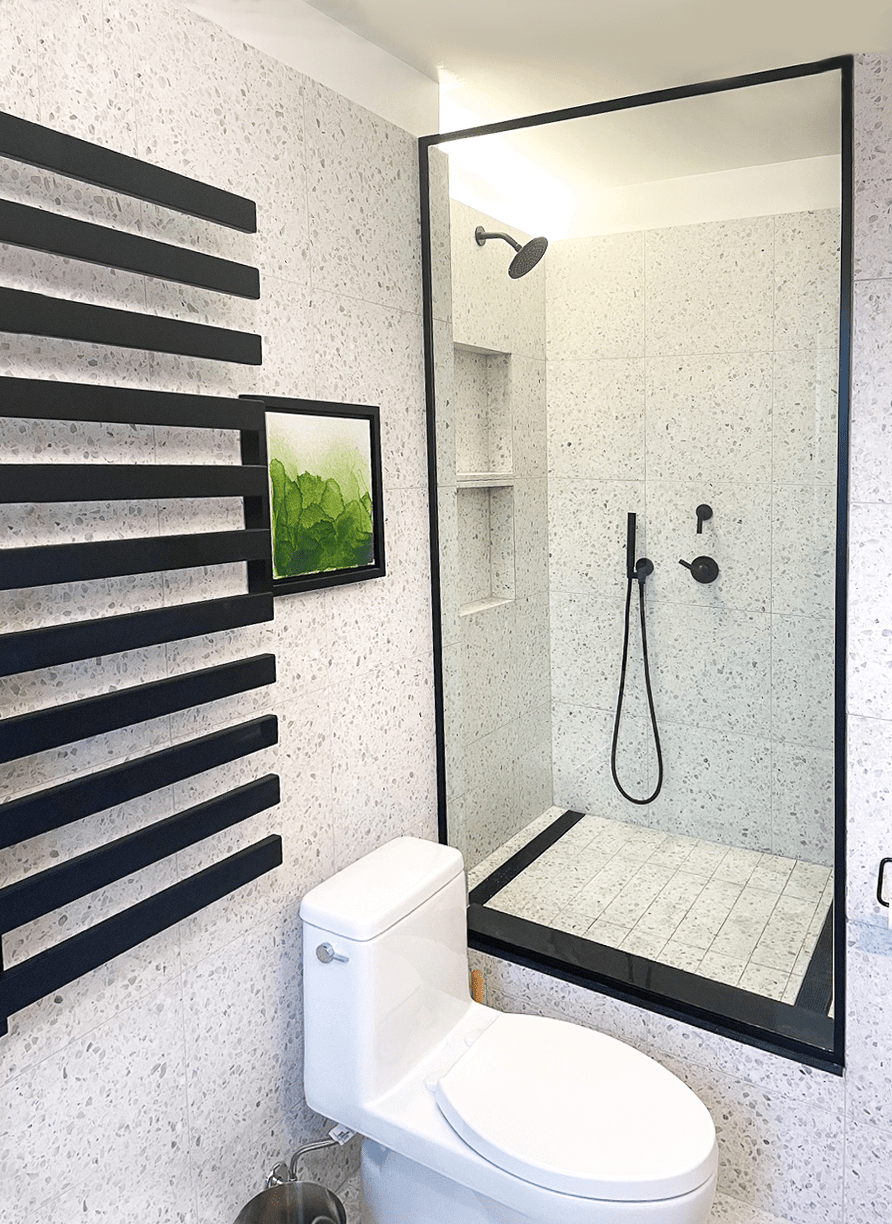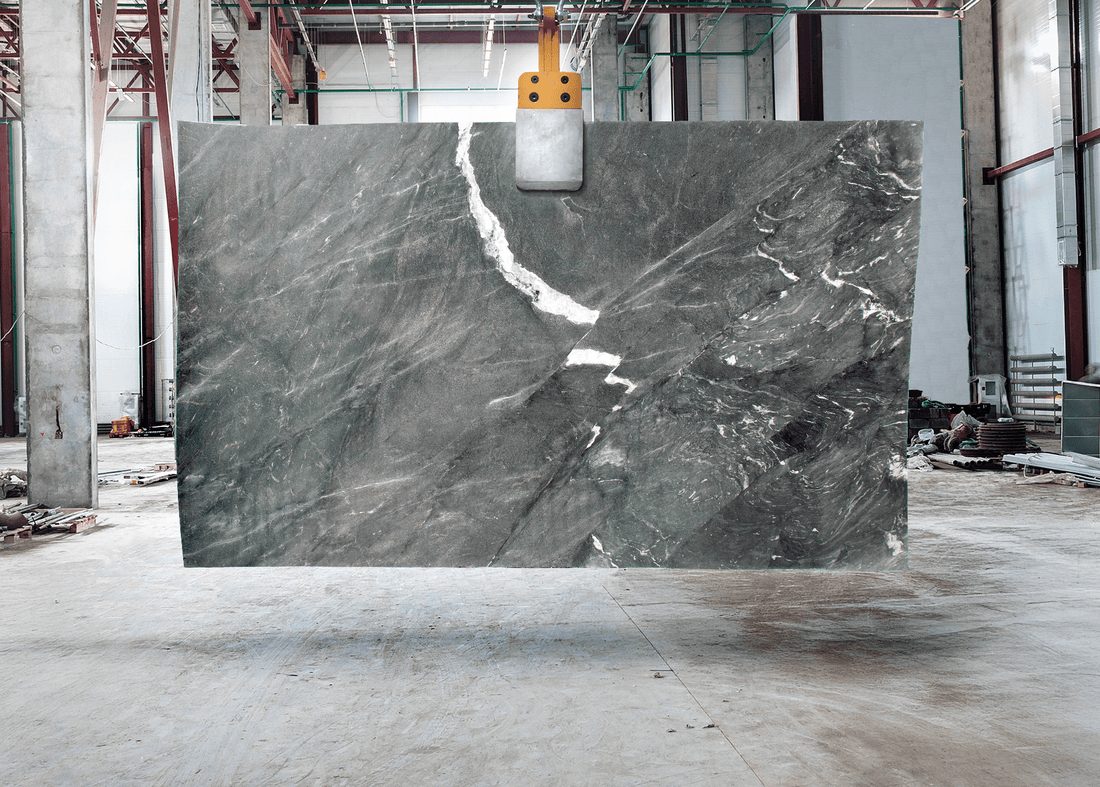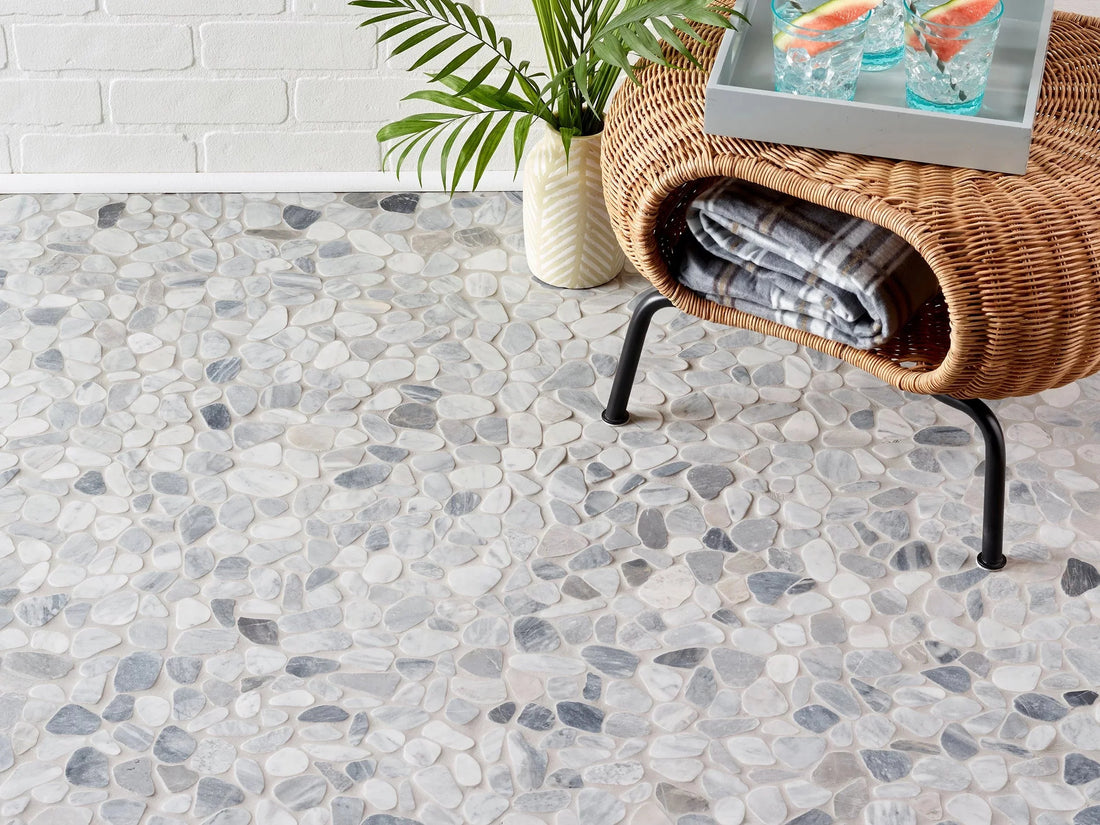Blog
The Real Story on Natural Stone Slabs: Cost, Choices & What to Know Before You Buy
Discover everything you need to know about natural stone slabs—from costs and installation tips to the best affordable alternatives. Find expert advice to help you choose the perfect stone for your project.
Learn moreElevate Your Space with Nature's Art: Discover Pebble Stone Mosaic at Cemento Collection in New Jersey
Bring the calming beauty of nature indoors with handcrafted pebble stone mosaics from Cemento Collection. Discover design ideas, durability tips, and creative uses for pebble mosaics in your home.
Learn moreDiscover Exquisite Zellige Tiles Near You: Cemento Collection in New Jersey
Are you in search of exquisite Zellige tiles near your location? Look no further than Cemento Collection, a premier destination for handcrafted Zellige tiles in New Jersey.
Learn moreFrom Drab to Fab: Transform Your Home with Terrazzo Tile Flooring
Discover the benefits of Terrazzo tile flooring for your home renovation project. Learn about installation, maintenance, and patterns to create a stunning, long-lasting flooring solution.
Learn moreSpring Collection 2023 - Zellige Colors
Spring has finally arrived, bringing with it new beginnings, fresh starts, and of course, vibrant colors. We at Cemento Collection are excited to offer you our latest collection of ZELLIGE tiles of spring colors, designed to bring joy and energy to your house. We selected six colors of zelliges tiles that are going to be trends for this season.
Learn more5 Creative Ways to Use Zellige Tiles in Your Home for a Stunning Transformation
Transform your home with the stunning beauty of Zellige tiles! Discover 5 creative ways to use these unique tiles for an eye-catching and unforgettable home makeover.
Learn moreWhat Type Of Tile To Choose For Kitchen And Bathroom Renovation Projects?
Maybe not a "million dollar" question but certainly the type of tile for the kitchen and bathroom, it can cost you a bundle if you choose the wrong answer. Don't we all hate that when we have a difficult decision to make and all we have is not an answer but a whole bunch of more questions to answer? Yes, most of us do. But let's think about that for a second, as if we are ordering a pizza or a sandwich from one of those food delivery apps and we simply have to choose what type of bread or how thick we want the pizza crust, toppings, dressings etc. if we don't answer those questions with patiently and honesty, yes we will get a pizza pie or a sandwich in the end but trust me, we won't enjoy it and perhaps we may not even touch it at all. When we are thinking of renovating our kitchen or bathroom, we have more questions to answer before we get the right answer to choosing the right tile for the project. We all know that kitchens and bathrooms are notoriously wet places due to their nature of purpose but not every part of bathrooms and kitchens exposed to water or other liquids equally. Indeed, without a doubt, shower base floor is the most water-exposed spot of all therefore, when it comes to shower flooring, we should think porcelain tiles or mosaics with non-skid options. If our project is a kitchen back-splash project then our options are wide open since the water exposure of a kitchen backsplash is relatively less water exposed but obviously more exposed to grease and other elements. Material Types for Kitchen and Bathroom Material Scratches & Stain Resistance Water Resistance Installation Difficulty Cost Per SQ FT. Ceramic Tile Medium Medium/High Medium/Low Medium/Low Cement Tile (Hand Made) Medium/ Low Medium/ Low Medium/High Medium/High Zellige Tile (Hand Made) Medium/ High Medium/ High Medium/ Low Medium Marble Tile Medium Medium/ High Medium/ High Medium/ High Above is a table of certain characteristics comparison between type of tile for kitchen and bathroom (based on our own experiences) such as Ceramic Subway Tile, Porcelain Tile, Cement Tile , Moroccan Zellige Tile and Marble Tile. Let’s not forget that it may be possible to enhance the characteristic of those materials by applying some sealants, protective chemicals etc. Such as Dry-treat Intensifia & Stain-Proof. What ever your battle ground of “renovation” may be, keep in mind that your options are only limited with your imagination. Happy renovation season folks!
Learn moreOur Secret On How To Install Your Cement Tiles Perfectly!
Congratulations! You finally got your dream tiles and ready to install them. We strongly recommend to make a laying down pattern plan before you start. Some tiles have some what more complex patterns than the others where as some tiles have a pattern that can make sense as single tile, we like to call them “single tile patterns” and others “multi tile patterns” . Once you know the surface area shape and the dimensions then make a plan that fits the best with your desired pattern such as where to start and how to finish the corners etc. Cement tiles are rather heavier than same size ceramic or porcelain tiles therefore it may be more difficult to handle and move around. Always wear protective gloves and goggles while working with them. Open the box carefully and if possible, examine all the tiles one by one If you need to, store the material in a dry area. Moisture or dampness can damage the tiles .Do not use Nylon or any material that will trap moisture, this could cause damage to tiles and installation. Cement tile is subject to color and tonal variations and requires blending of tiles to achieve the best installation. Install in accordance with current versions of American National Standards Institute, Inc. (ANSI) “A108 American National Standard Specifications for Installation of Ceramic Tile” and TCNA “Handbook for Ceramic, Glass, and Stone Tile Installation”. Cement tiles must be installed on a leveled, clean and dry surface or suitable stable sub-floor or vertical surface. Vertical installation on dry wall is not recommended due to the weight of tile and mortar. Use only high quality LHT mortar (Large-Heavy Tile Mortar). Rapid setting mortars may be beneficial for certain applications. Spread adhesive on substrate with a large notch trowel (1/2”). Apply adhesive evenly to back of each tile (back-butter) to achieve 100% coverage. Immediately remove excess adhesive with damp cloth or sponge before. Do not use any acids or alkaline to clean tiles. We do not recommend the use of mallet or hammer to level tiles. The installer should use their hands to ensure tiles are properly set and level. Cement tiles should be cut using a diamond blade and wet-saw. Allow 24-48 hours for tiles and mortar to completely dry before sealing. Tiles should be 100% dry before any sealer is applied or grout is installed. We recommend to use Dry Treat - Stain Proof Sealant Grout release application - Seal tiles with an impregnating or penetrating sealer BEFORE grouting (this will act as a grout release and prevent grout from staining tiles). Apply sealer until tiles will not soak up anymore, usually 2 applications is sufficient. Allow 2-3 hrs in between applications for sealer to dry. Grouting – 1/16”-1/8” grout joint is recommended. Grout should be applied in small areas and cleaned up immediately. White or light color grout is recommended. Dark or black color grouts should be used carefully. If the grout color is darker than any color in the pattern, it can stain the tiles. After grouting, clean floor with a PH Neutral detergent. Any extra grout residue should be removed immediately. Take extra care with your tools during installation to avoid chips, stains, and water spots. Seal tiles with Dry Treat – Stain Proof Sealant and grout for the final time with 1 application. Follow instructions for sealing. Tiles must be covered after installation to protect
Learn moreWhat makes Zellige clay tiles special?
Besides the fact that the process of Zellige tile making is almost 100% hand-made and never used mas’ production, electrifiedmachinery, the raw clay material that comes from Meknes, Fe, Safi, and Sale of Morocco, has this very high content of silica composition. High silica composition makes Zellige tiles less water observant and keeps the tile’s glaze bright and vibrant fordecades to come. Today, in Fes and surrounding areas, same hand craftsmanship used by the artisans who inherited the technique from theirancestors. On our 2018 trip to Fes, my partner and I were told by the local producers that lately, few European entrepreneurs have tried to modernize this technique by adding some automated machinery however, the results were discouraging. I, for one, couldn’t verify this information but after spending a few days in Fes Zellige workshops, I could tell that it’s not just producing cle tiles, it is a lifestyle. In Fes, Zellige making is shaping local people’s life. They arrange their vacation time, work hours, weddings, etc all around theproduction cycle of Zellige making because it involves the weather, the temperature, humidity level. If someone comes with a fasterprocess that eliminates that “charming imperfection” the magical world of real Zellige will disappear. And you thought that the desert has only a few colors. This maybe true if you didn’t meet the “zellige” yet. Skillful 14th Century’s North African artisans mastered the colors of blue, green, and yellow. Red was introduced in 17th century. Today's natural earth colors were not used until 20th century. Patterns are commonly used are consist of geometric shapes that can be found onornament walls, ceilings, floors, fountains, pools, and tabletops. Below, an antique zellige tile used on a fountain in Meknes Morocco (left). Merinid Zellige from the Chellah in Rabat Morocco (right)
Learn more












